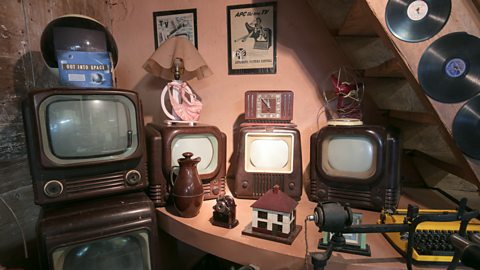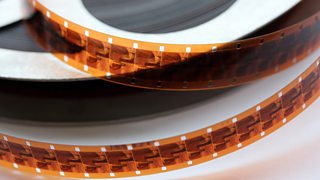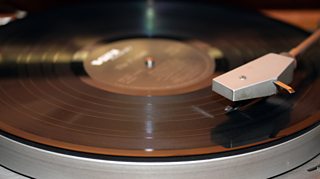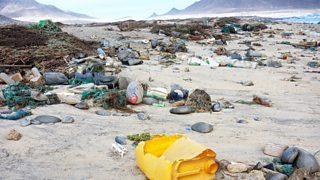Eight reasons we fell in love with plastic
We may not be on speaking terms right now, but we do have a love affair with plastic – in fact it can be all consuming. Adaptable, lightweight, cheap and hygienic – fantastic plastics started to win our affection back in the late 19th Century.
In Plastic Fantastic, materials scientist and broadcaster Professor Mark Miodownik explores how we fell in love with plastic, our complicated relationship with the material and its importance in modern life. So just how did plastic pervade our lives?

Why did we first fall in love with plastic?
Materials scientist Professor Mark Miodownik on how we first fell in love with plastic.
1. Early plastic was a substitute for ivory
Surprisingly, the first commercial plastic was made from cotton.
In 1863, elephant ivory was getting scarce, so an American ivory billiard ball manufacturer offered a $10,000 reward to any inventor who could find an alternative material for the balls.
Amateur inventor John Wesley Hyatt, took up the challenge and started experimenting with cotton wool and nitric acid. He devised the material cellulose nitrate, which he called "celluloid", an off-white and malleable material that would hold its shape in the right situations.
Unfortunately celluloid billiard balls were slightly explosive and produced a loud bang when hit together. Nevertheless, Mr Hyatt’s invention went on to have thousands of uses, with commercial celluloid enabling the development of movie film.
2. Plastic made the movies happen
While the very first cinema film reels were made of paper, celluloid's strength and malleability meant it was the perfect material for increasing the practicality of making cinema film.

This flammable plastic could be made into long strips and painted with a chemical that would alter in the presence of light.
Celluloid arrived just at the right time, enabling the wide distribution of Hollywood movies.
3. Bakelite: The material of a thousand uses
In 1907, Bakelite arrived on the scene – a plastic made as a synthetic by-product of coal gas.
It was brittle and dark brown, but could be formed into many different and lasting shapes. Its electrical insulation properties made it great for light fittings, plugs and sockets.
Bakelite opened the way for development of other synthetic plastics that would come over the next half century.
4. Plastic influenced World War Two
In the 1930s and '40s, petrochemical chemists created a number of new plastics, including polyethylene. Polyethylene played a vital role in World War Two – it was used to insulate the long electrical lines used by the Allied forces’ airborne radar, and helped them protect the UK's supply ships in the Atlantic.
“It gave our pilots an edge and some say that it actually contributed to the outcome of the war,” says Susan Lambert, curator of the Museum of Design in Plastic at the Arts University Bournemouth.
Plastics had countless applications: nylon was used to replace silk parachutes, acrylics were used for the windows on bomber turrets, and plastic helmets replaced metal helmets. This increase in new plastics came at the same time the plastics industry was growing exponentially.
5. Music could now be recorded
Until the middle of the 19th Century, people were only able to listen to live music played through instruments.

Then the phonograph cylinder was invented by Thomas Edison.
Made of wax, the first cylinders allowed the recording and playback of sound, but changing to plastic drastically improved the shelf life of the recordings, making them far more durable.
Later breakthroughs including vinyl records, cassette tapes and CDs, made music accessible to the public on a massive scale, all thanks to plastic.
6. Hospitals became more hygienic
By adding extra chemicals to plastic, inventors could make it elastic and soft. These properties were perfect for hospital equipment and allowed glass bottles and rubber tubing (difficult to sterilise and prone to cracking) to be replaced by blood bags and pipes.
In addition, disposable syringes, all of which could be replaced, made it easier to keep hospitals hygienic and save lives.
7. Convenient disposability
After the Second World War, the petrochemical industry was expanding. There were lots of new plastic materials which it wanted to develop, and factories needing work. This led to the "Plastic Revolution".
Economies of scale meant that plastic could be very cheap, but only when manufactured on a large scale. Around the 1960s, single-use plastic products such as cutlery, plates and cups started to appear.
It was a marketer’s dream: completely disposable, they could free the consumer from chores, like washing up. And so, plastic sparked a throw-away culture…
8. Plastic reduces food waste
In the EU, over 88 million tonnes of food is wasted every year – this contributes hugely to carbon emissions. But packaging food in plastic can dramatically reduce the food waste.

“One of the great advantages of plastic packaging is the amount of extra time it gives you to get food from the field to the supermarket shelf,” says material scientist, Professor Phil Purnell.
“It allows you to reduce the amount of food waste that you generate, and it allows you to protect things in transit.”
What’s gone wrong?
There is now a plastic problem. Over-reliance on cheap, disposable plastic packaging and the material’s durability when it leaks into the environment – especially the oceans – means it can last for decades.
With the equivalent of a truckload of plastic waste dumped in the oceans every minute, we need to change the way we use and value plastic. The mantra is Reduce, Reuse, Recycle.
More from Radio 4
-
![]()
Plastic Fantastic
Plastic waste and pollution have become a global problem but how did we allow this to happen in the first place?
-
![]()
How to talk like a Samaritan
What are the right and the wrong things to say to someone who is struggling to cope?
-
![]()
Seven of the world's most infamous animal invaders
From mammals to molluscs, here are seven of the world's most troublesome animal invaders.
-
![]()
Why listening to books is good for you
Do you Tolstoy on the treadmill? Christie on the commute? Kipling in the kitchen?




